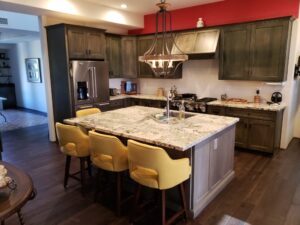 Although not a new concept, Universal Design has been slow to go main stream. But that’s changing for two reasons. First is our aging population – often referred to as the “Silver Tsunami.” Second is the acknowledgement of residents who don’t fit the profile of the “average guy.”
Although not a new concept, Universal Design has been slow to go main stream. But that’s changing for two reasons. First is our aging population – often referred to as the “Silver Tsunami.” Second is the acknowledgement of residents who don’t fit the profile of the “average guy.”
Traditionally homes were, and still are, designed for a 5’ 10” tall male between the ages of 20 and 40. This profile eliminates the overwhelming majority of home residents and forces people to adapt to these specs.
These days, our aging population is pressing for homes that adapt to their needs. A recent edition of the AARP magazine features the Property Brothers. The article includes a cartoon section where the brothers explain the benefits of Universal Design to their parents. They point out features like sensor-style touch faucets, raised dishwashers and organized storage in cabinets and drawers. And Universal Design is not just for aging.
The same advantages apply to all ages. Think about a child working on a coloring book or other project at the kitchen island. Do you want them perched on a bar stool where their feet can’t reach the floor? Some countertop heights can be lower to keep them grounded. It’s not only safer for everyone, it encourages family interaction.
People mistake Universal Design as a concept that applies only to older people and those with special needs and think of it as institutional.
Not true. Done right, safety features can be seamlessly incorporated into the décor and create beautiful, updated rooms.
Whether you desire to Age-in-Place, make your home safer or simply update your look; talk to an interior designer who understands how Universal Design can fit your vision. It’s well worth your time.

